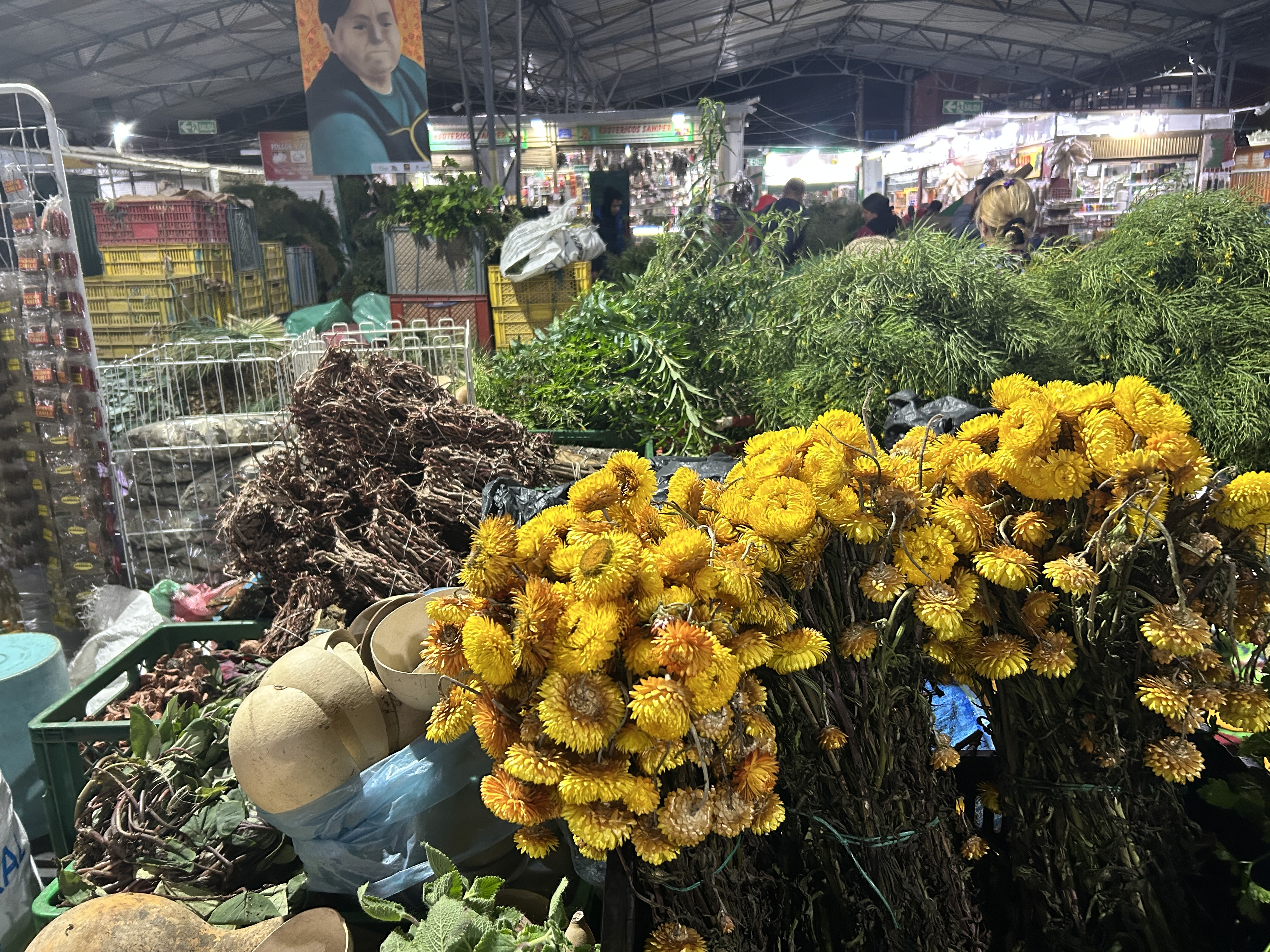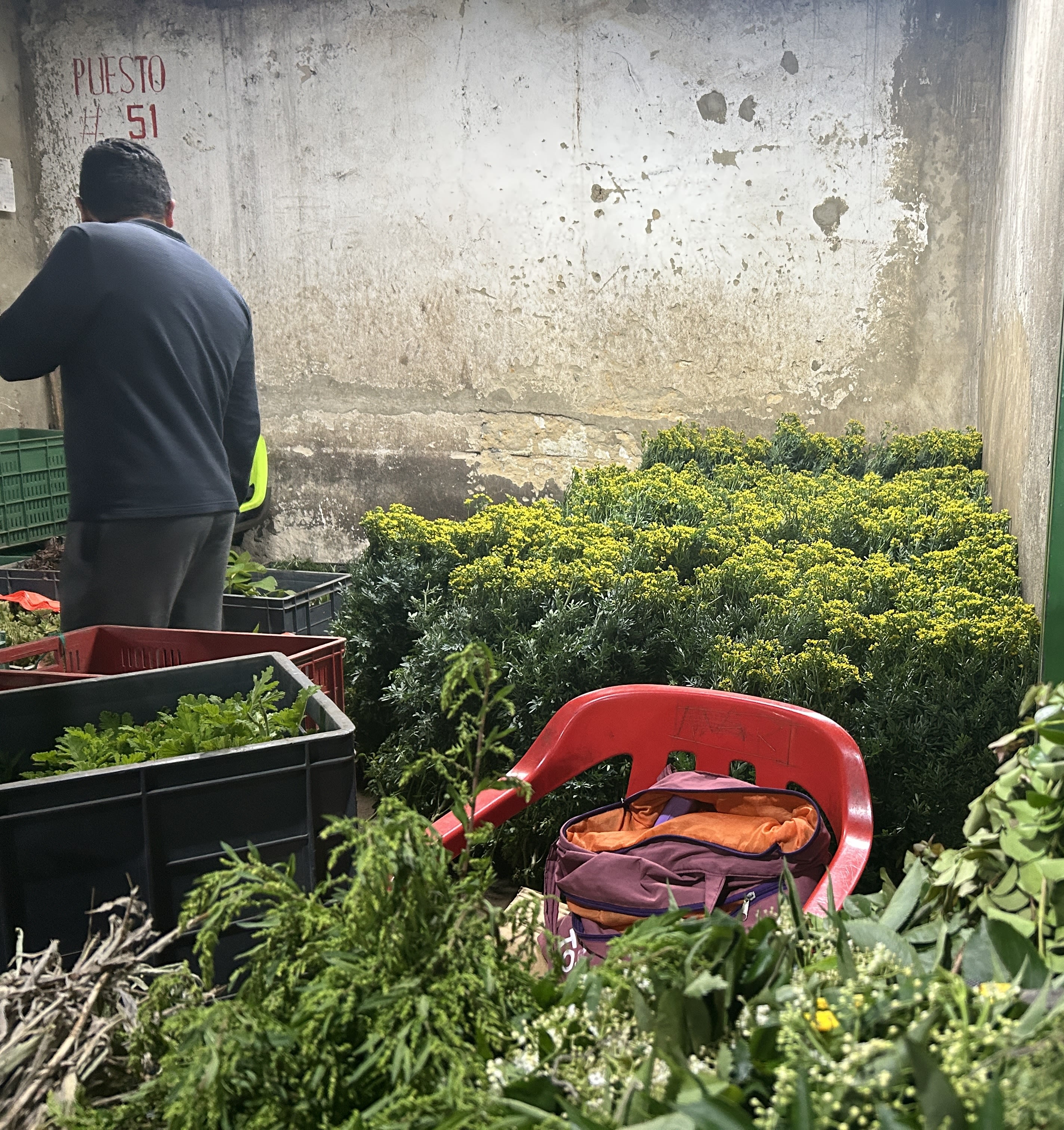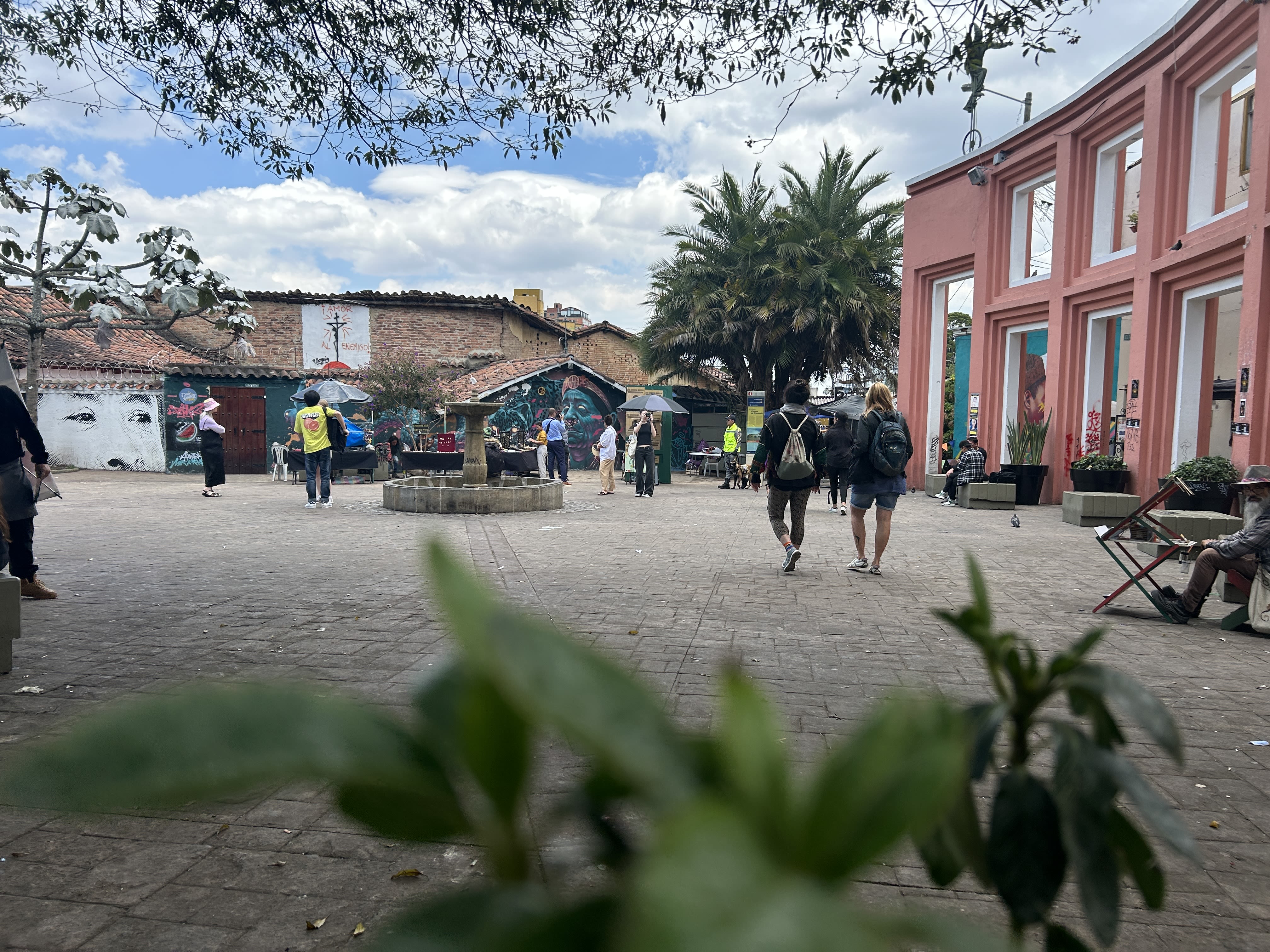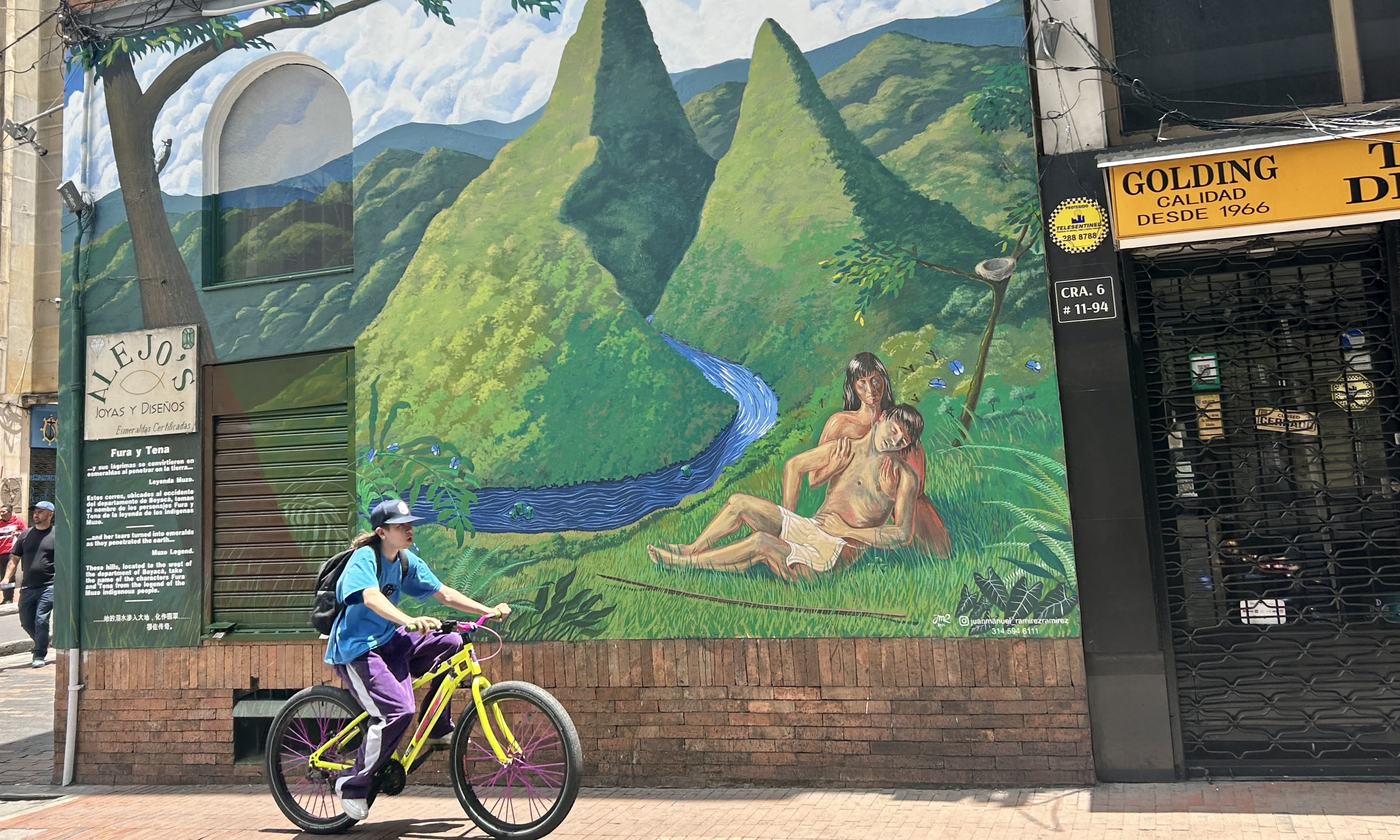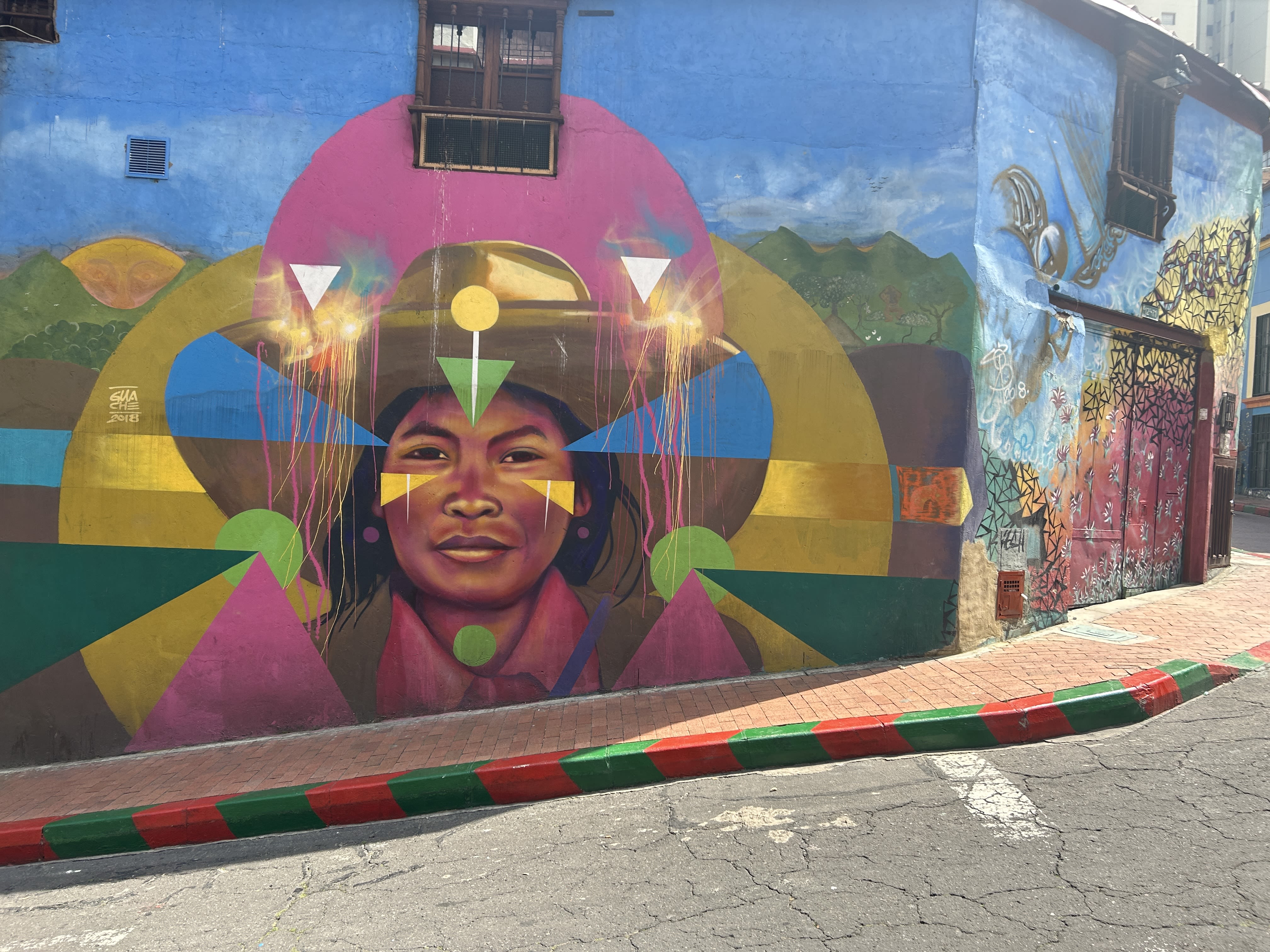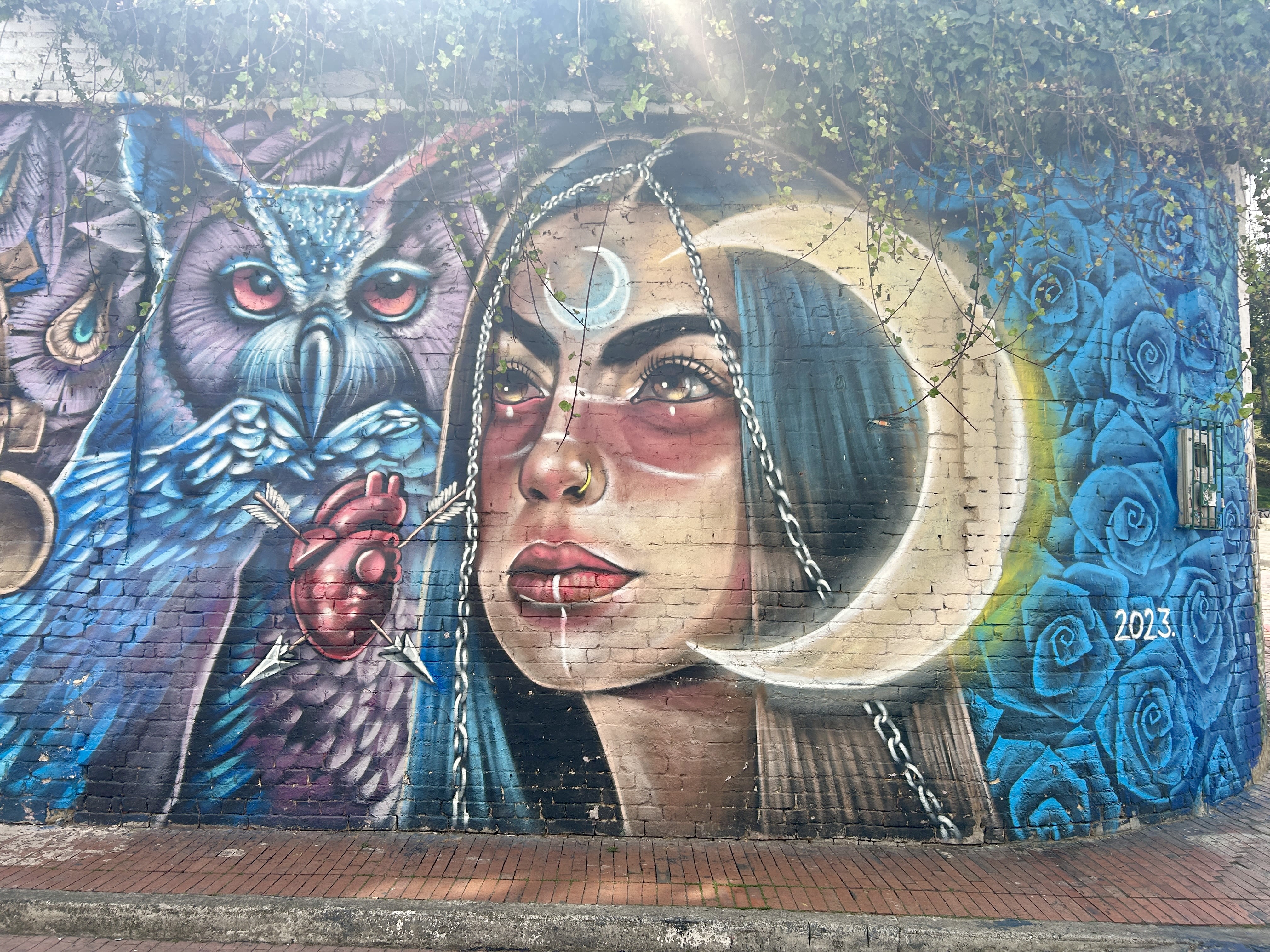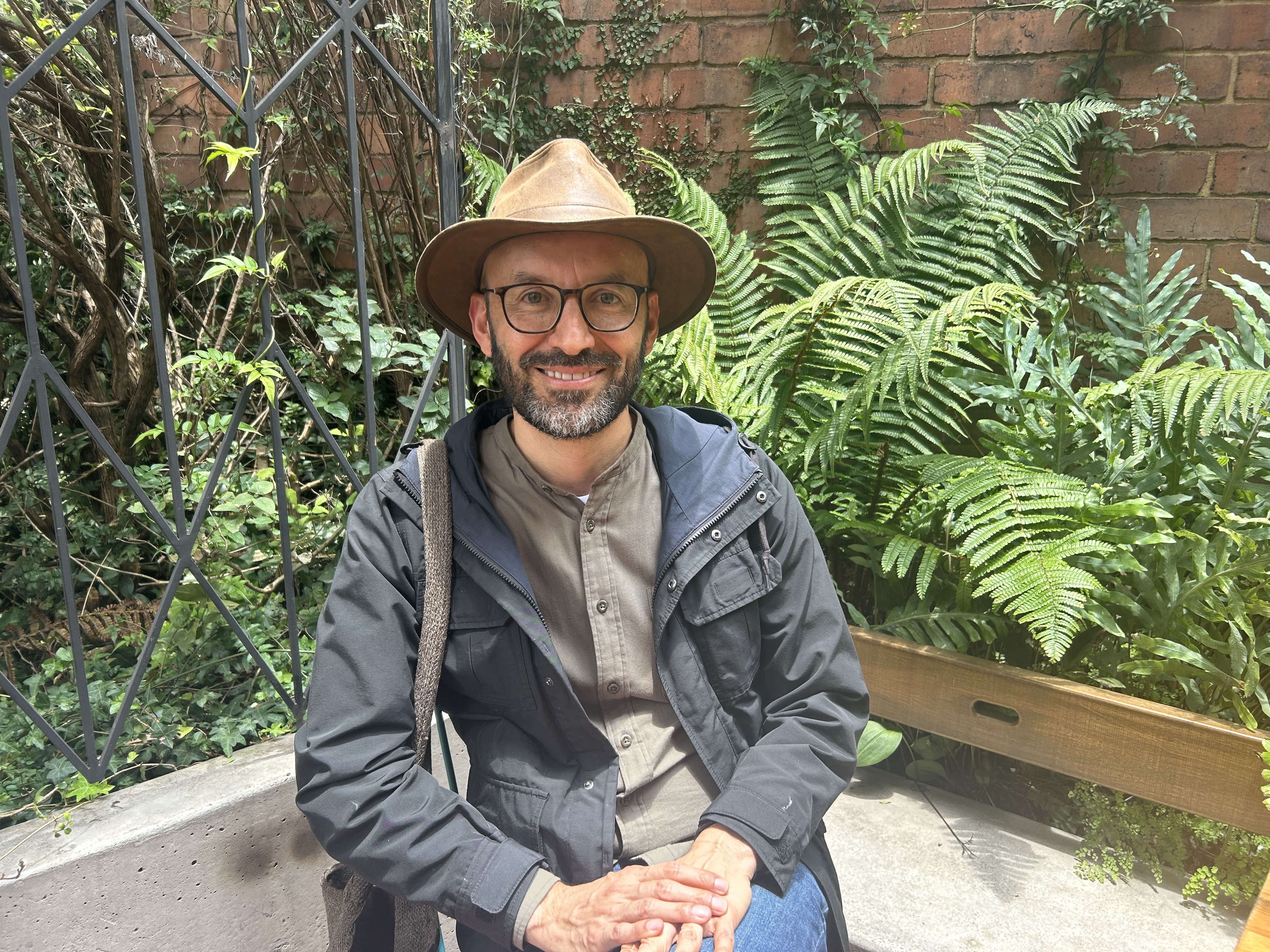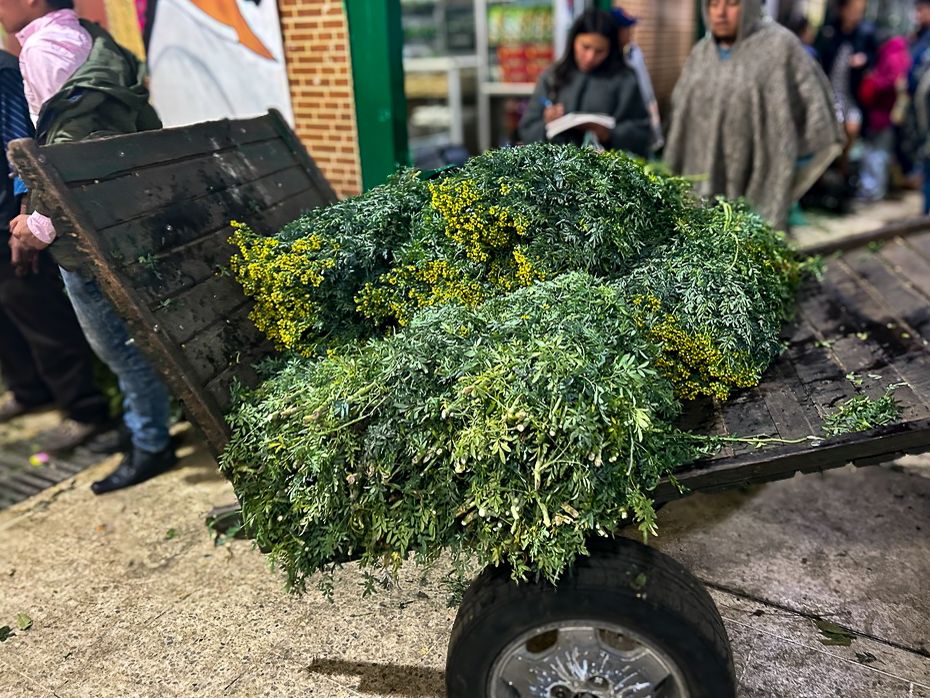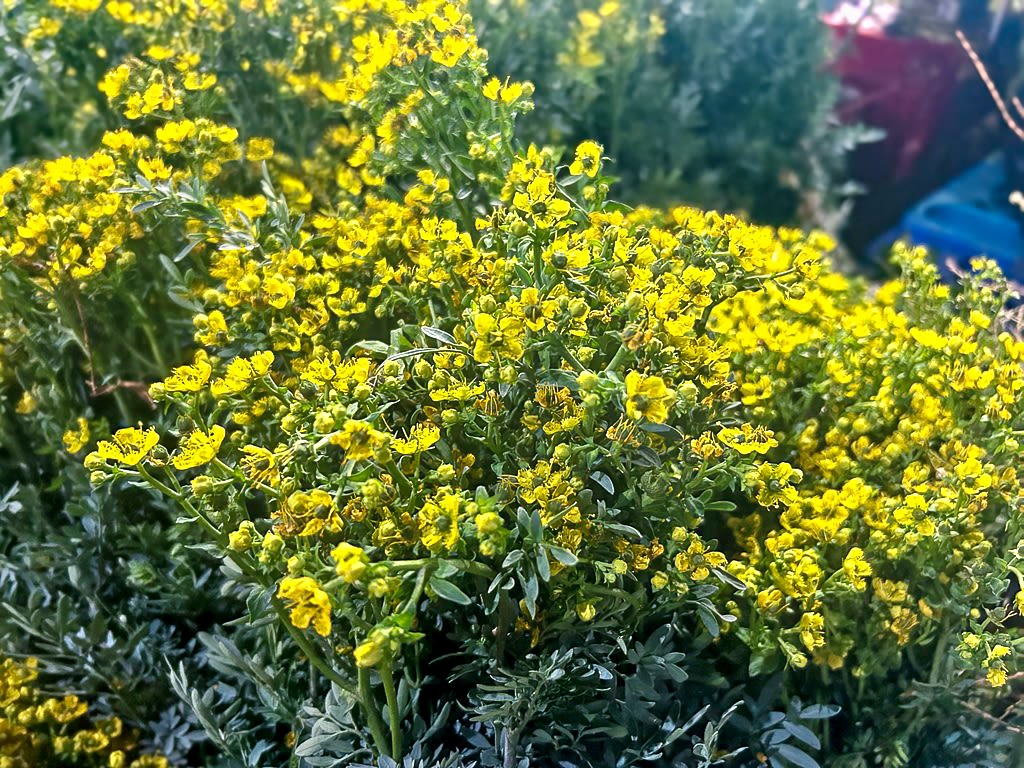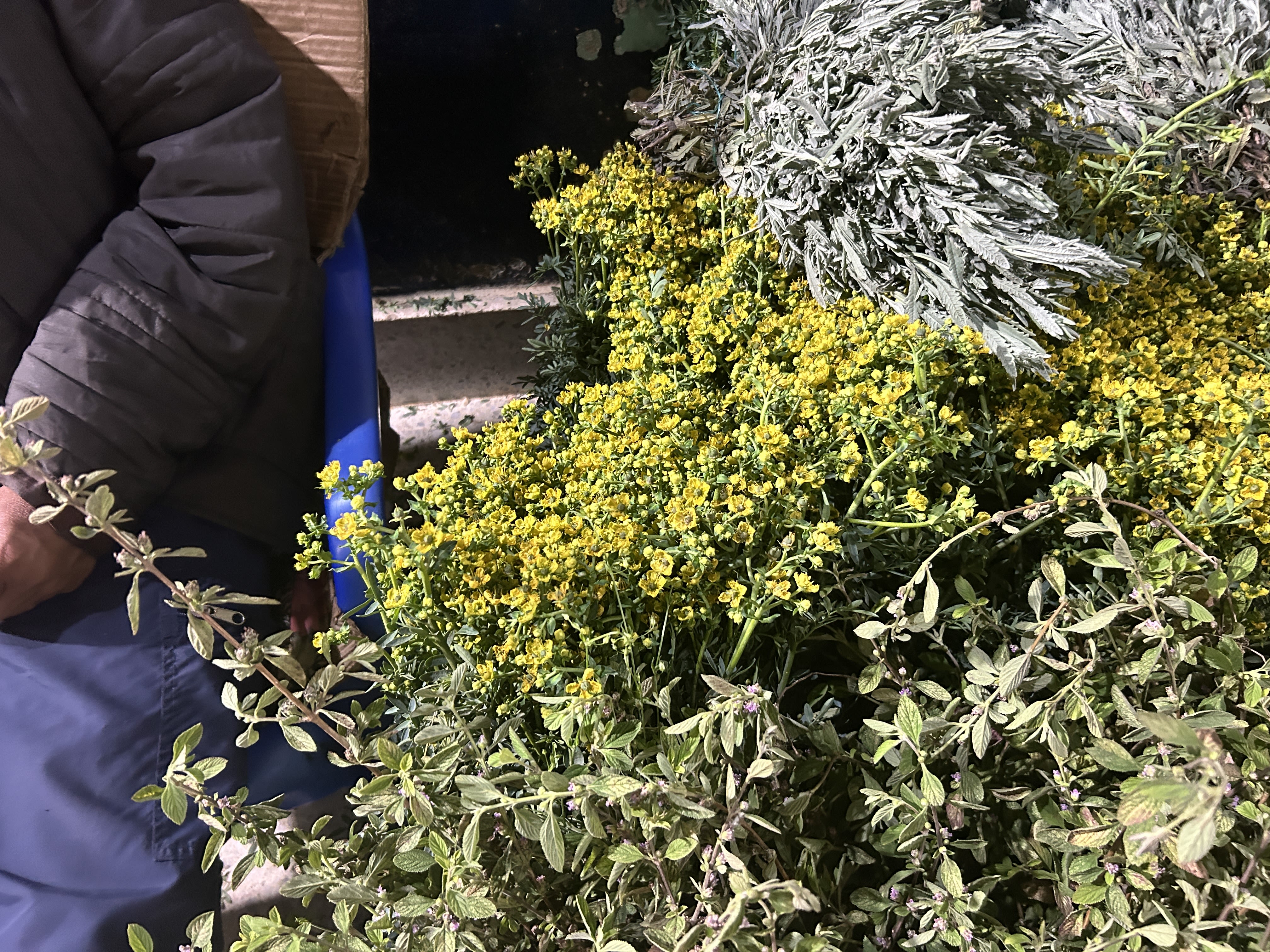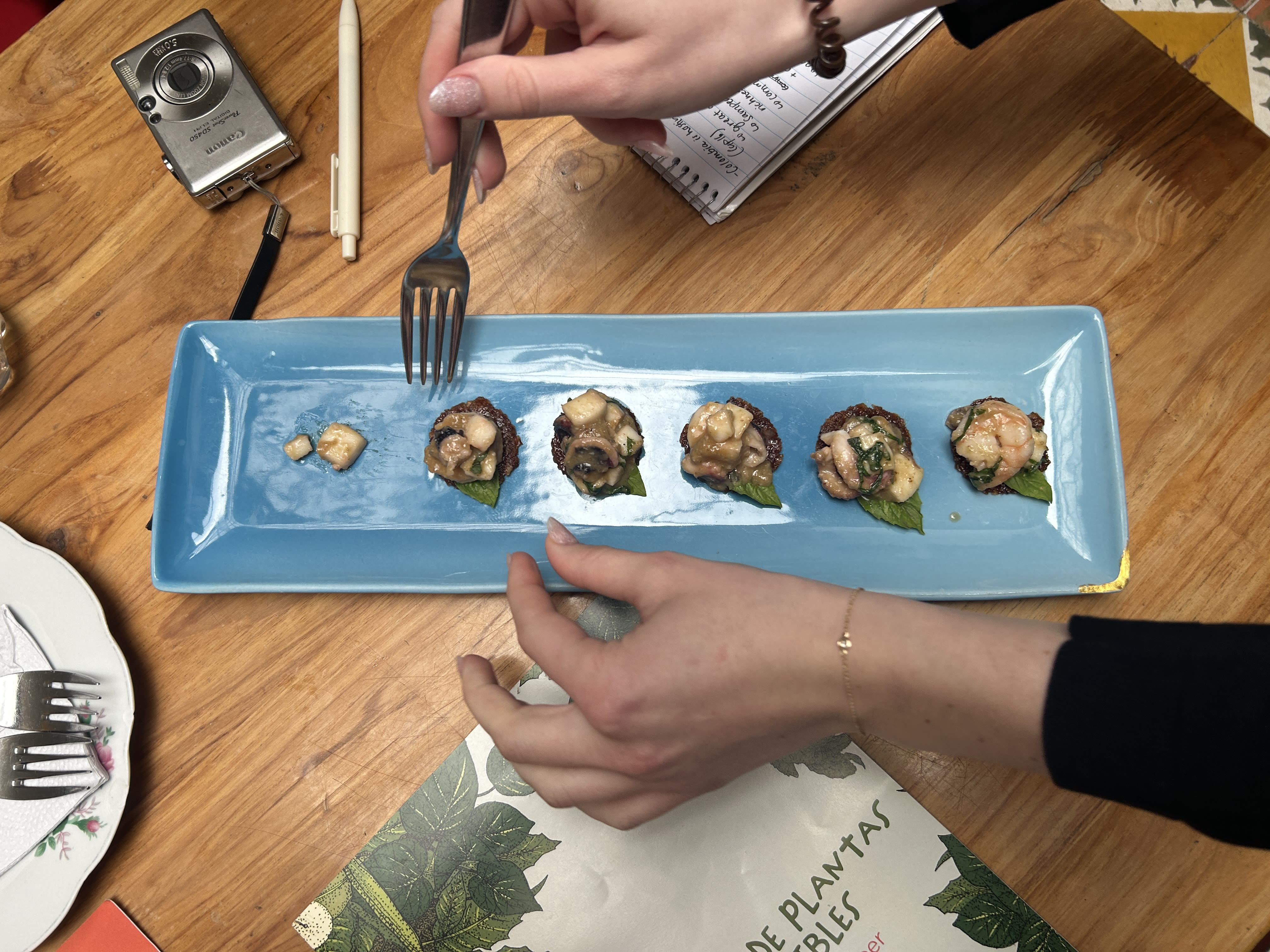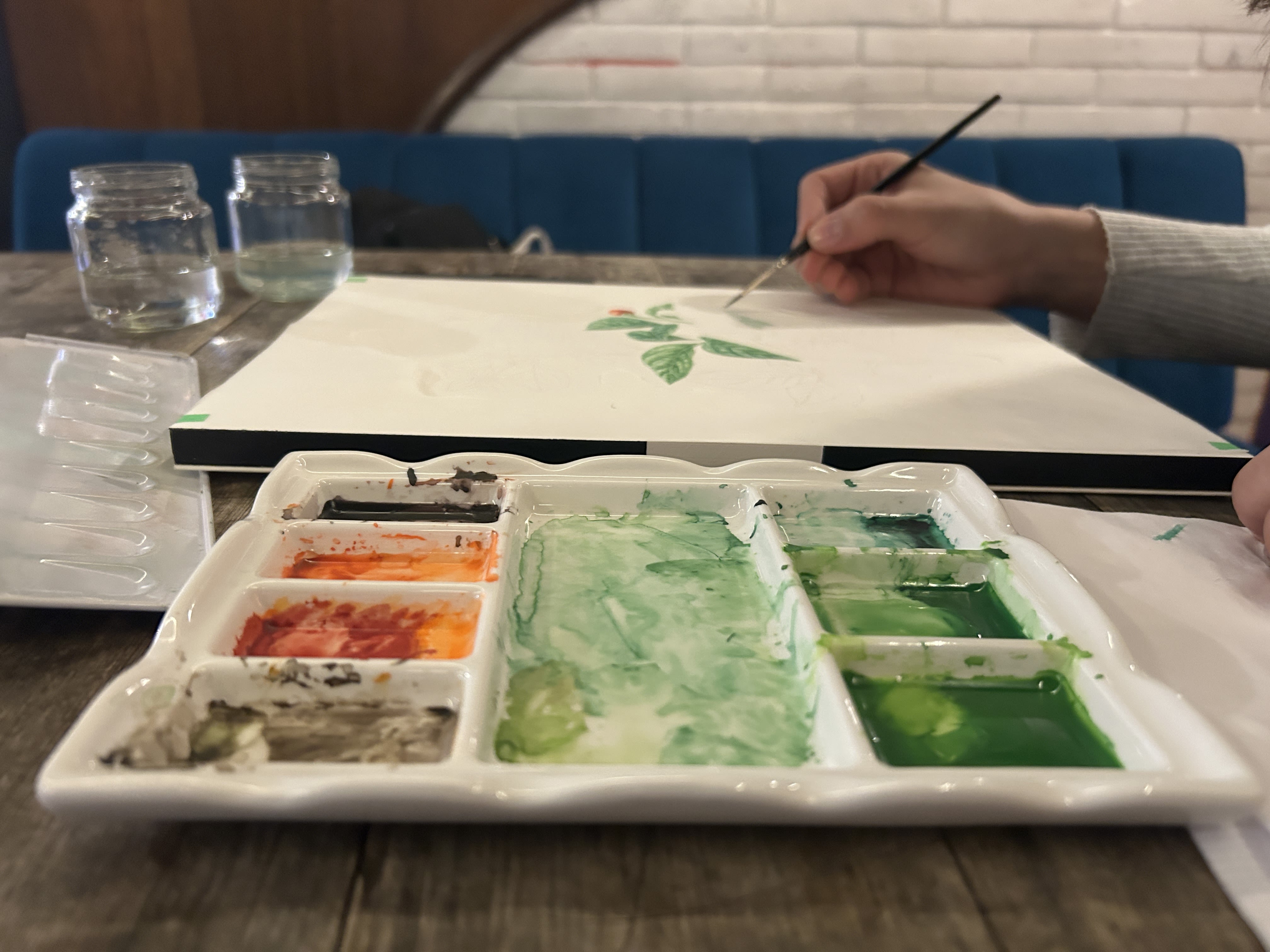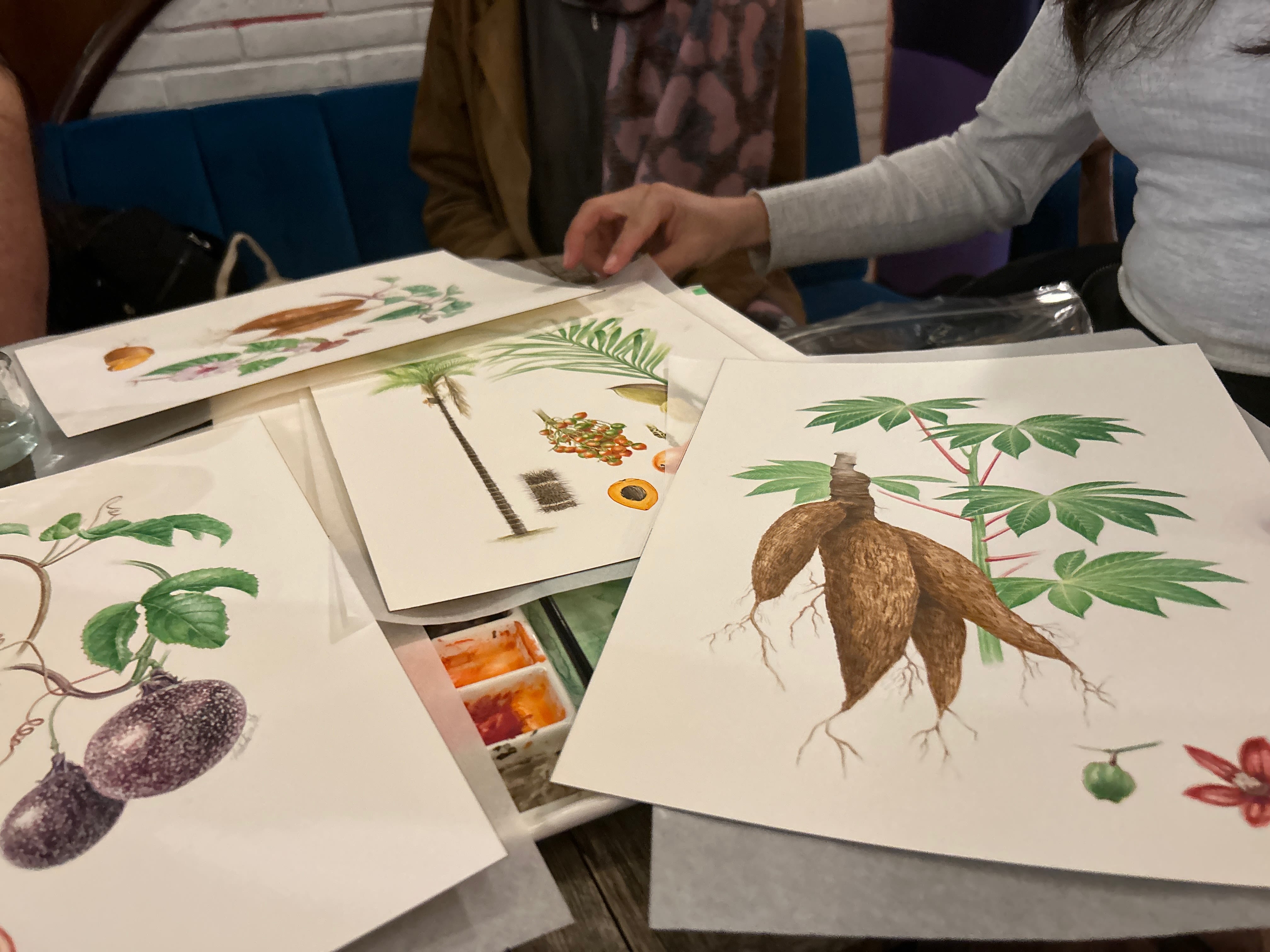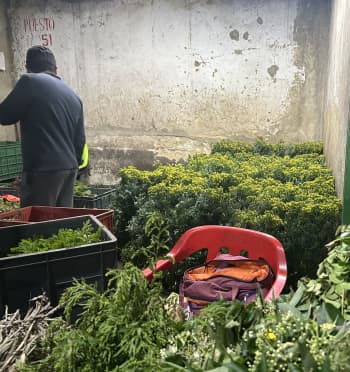The Night Market: biodiversity and ancestry in Bogotá
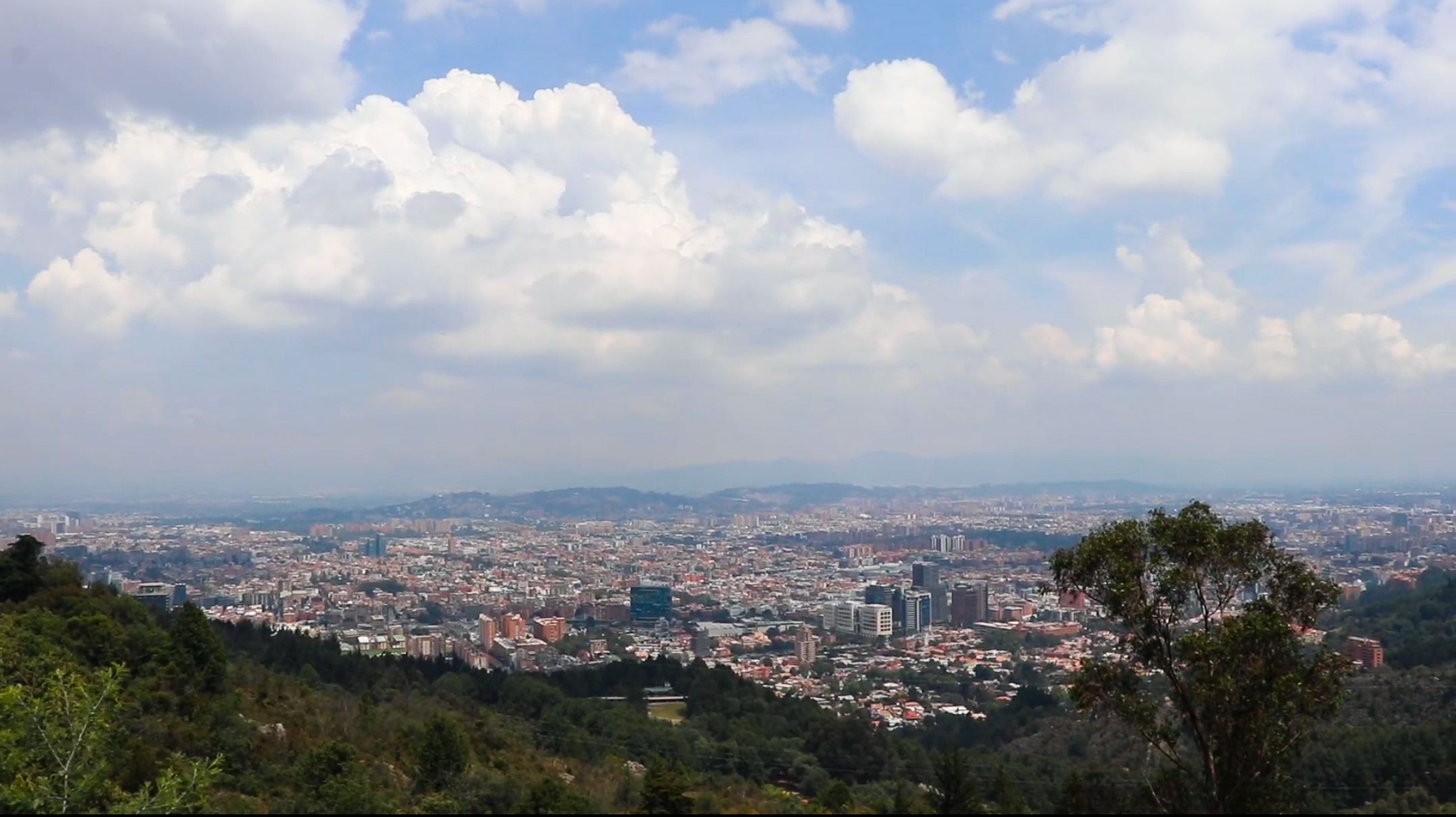
In a city nestled in the Andes mountains, modernity and tradition meld in Bogotá, Colombia, near the lake that is considered the origin place of the legend of El Dorado.
Colombia is the most recent location of the United Nations Biodiversity Conference of the Parties (COP 16), held in Cali, a city southeast of the country's capital. The rich flora of Colombia surrounds even Bogotá in the mountains.
The Plaza de Chorro de Quevedo in Bogotá.
The Plaza de Chorro de Quevedo in Bogotá.
By day, the streets bustle with tourists buying beaded earrings, origami animals or sizzling empanadas from food stands, or gawking at the colorful graffiti that paints the city.
Indigenous artists paint the natural world around them as a symbol of the long history Bogotá has, both before and after colonizers came to the city in search of gold.
Colombia is the second-most biodiverse country in the world, according to the World Wildlife Fund, and in graffiti across Bogotá artists have painted rainbows of the country’s beauty and indigenous peoples.
However, the biodiversity, and the ancestral traditions and families that make their livings off of the rich variety of plants in Colombia, are at risk of becoming extinct.
A street artist tells the story of the mythical origin of emeralds. Fura and Tena, two immortal beings, were created to populate the earth. However, Fura betrayed her husband, and both were turned into mountain peaks. Fura's tears are what created the emerald.
A street artist tells the story of the mythical origin of emeralds. Fura and Tena, two immortal beings, were created to populate the earth. However, Fura betrayed her husband, and both were turned into mountain peaks. Fura's tears are what created the emerald.
A boy and the sun are interchangeable in this piece of street art.
A boy and the sun are interchangeable in this piece of street art.
Street art shows an indigenous woman connected to the moon.
Street art shows an indigenous woman connected to the moon.
According to Felipe García-Cardona, the manager of the Center for Biodiversity Economics and Finance in the Humboldt Institute, the biodiversity of Colombia and the esoteric and medicinal traditions born from it might cease to exist. Much of this is due to climate change, but he also stressed the lack of generational continuity of traditions.
Felipe García-Cardona sits in the courtyard at Mini-Mal.
Felipe García-Cardona sits in the courtyard at Mini-Mal.
“We have 75,000 species, and half of them are plants. We have also identified more than 7,000 useful plants [at the Humboldt Center],” said García-Cardona.
La Plaza Samper Mendoza

Very few places displays the vastness of Colombia’s biodiversity better than Plaza Samper Mendoza, a market that operates only at night, and contains hundreds of herbs, spices and medicinal plants.
Venders arrive from all over the country, flocking to the market to sell their family’s products. All night, young men are whistling and shouting to passersby to move out of the way, as they carry in and out cart after cart of traditional herbs.
One vender carting bundles of the plant "la ruda" out of the market.
One vender carting bundles of the plant "la ruda" out of the market.
Bunches of la ruda gathered for sale.
Bunches of la ruda gathered for sale.
One plant can be found all over the market: la ruda, with a bright yellow flower and long green stem. Called “rue” in English, the plant is considered medicinal by the venders who sell it.
According to José, a vender selling the plant, women can ingest the plant with milk or eggs to encourage fertility, and the plant can also be consumed in order to cleanse a person's energy.

The plants are essential to Colombia’s traditional medicine and esoterics, even as the long-standing traditions of the herbs are being replaced with modern medicines.
One vender still keeps the tradition of medicinal herbs, although others have adopted more modern remedies. She said that the plants she uses are more effective than any modern medication she has tried and believes in the strength of the herbs.
There is currently a movement that is attempting to preserve the herbal traditions that remain essential to Colombian culture. One such advocate is Eduardo Martínez, executive chef at Mini-Mal.
A market vender sits by the ruda she is selling.
A market vender sits by the ruda she is selling.
Eduardo Martínez, executive chef at Mini-Mal.
Eduardo Martínez, executive chef at Mini-Mal.
Martínez adds finishing touches to a dish.
Martínez adds finishing touches to a dish.
Mini-Mal is “an exercise in gastronomic research-creation” within the natural world of Colombia and it’s diverse cultural tradition.
Mini-Mal is “an exercise in gastronomic research-creation” within the natural world of Colombia and it’s diverse cultural tradition.
Mini-Mal is “an exercise in gastronomic research-creation” within the natural world of Colombia and it’s diverse cultural tradition, according to the restaurant’s website. Martínez uses herbs found at La Plaza Samper Mendoza such as mint, cilantro and parsley in his cooking, and works with the Humboldt Institute to preserve Colombian cultural tradition.
The hundreds of herbs within Plaza Samper demonstrate the importance of one event that highlighted Colombia’s biodiversity, the Conference of the Parties to the Convention on Biological Diversity (COP 16). It was held Oct. 21 to Nov. 1, and the event had goals of prioritizing collective dialogue with farmers, indigenous groups and ethnic communities.
According to García-Cardona, Colombia’s natural resources are in peril. He said that one way to save the country’s flora is for young people to join and further the movement.
Valentina is a young painter and biologist that paints hyper-realistic commissions of flora and fauna, including Colombian species, and uses her unique skills to raise awareness of their plight. She is part of the effort of young people who want to help save the biodiversity from climate change and deforestation.
Valentina's watercolor palette, placed on a table in a local coffee shop.
Valentina's watercolor palette, placed on a table in a local coffee shop.
Valentina's paintings preserve the colors of the rich flora and fauna.
Valentina's paintings preserve the colors of the rich flora and fauna.
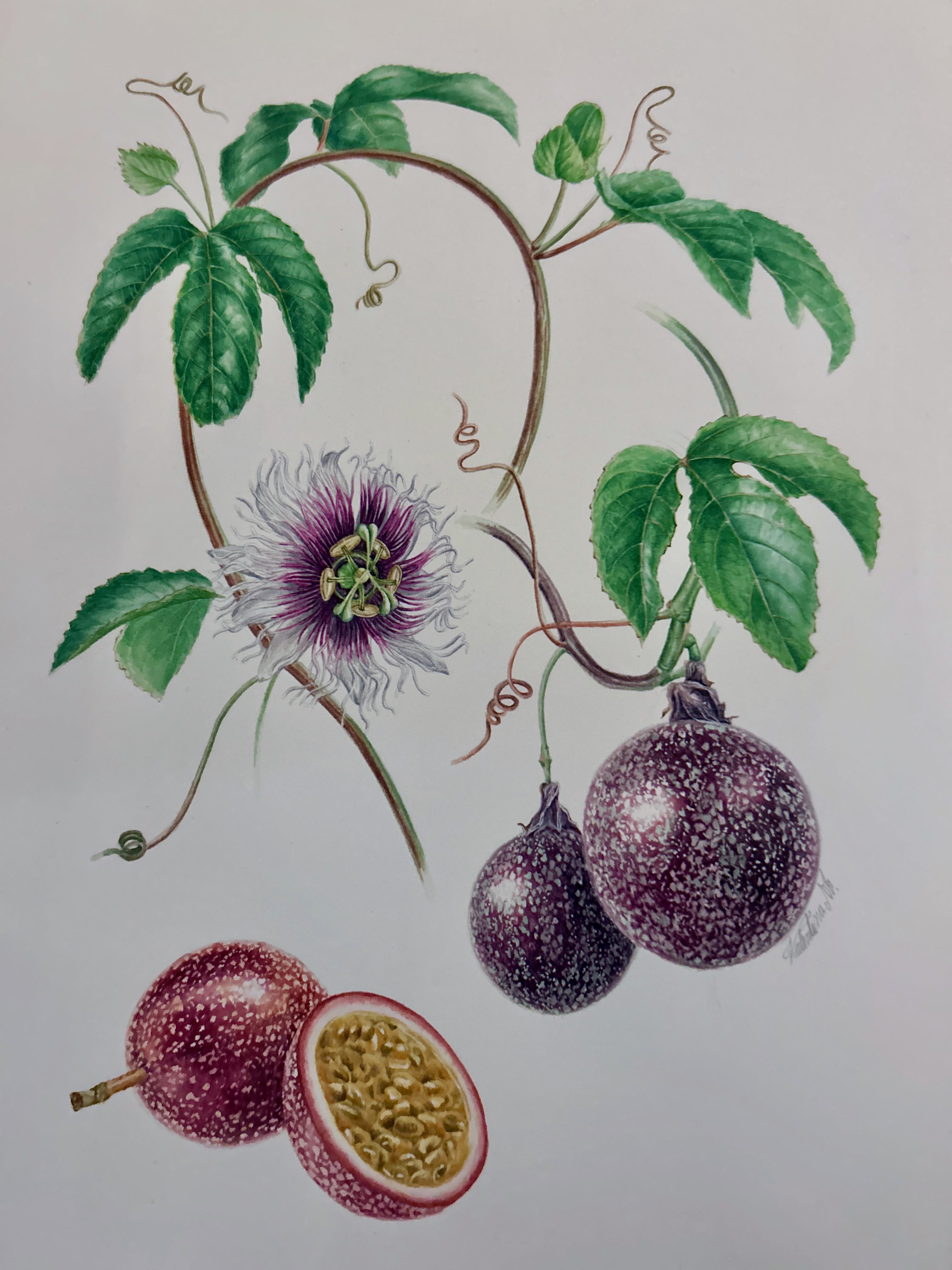
García-Cardona emphasized that COP 16 will be a good place to advocate for the sake of Colombia's biodiversity.
"We will have an incredible opportunity to show Colombia's incredible richness in biodiversity, and I think that Samper Mendoza is a tiny example of that richness. And for us, the COP is an incredible opportunity," García-Cardona said.
COP16
Cali, Colombia
At COP 16, which lasted from Oct. 21 to Nov. 1, representatives from more than 175 countries gathered in Cali, making up the largest United Nations biodiversity conference ever. Cooperation between states is essential to halting issues like climate change, deforestation and habitat loss, participants said, and this conference functions as a platform for these conversations and negotiations.
However, little was resolved as financial talks stalled the conference, according to The New York Times. Wealthy countries continue to wreck the economies of developing countries, who host much of the world’s biodiversity, by contributing to climate change. At the same time, these financially richer countries aren’t convinced that donations are the best route to save flora and fauna.
A biodiversity treaty was signed two years ago at the biodiversity conference in Montreal with the goal of distributing $200 billion a year toward climate change initiatives until 2030. Though countries are still not meeting this goal, the conference came up with a different solution.
Now, there is a new initiative to encourage companies benefiting from genetic data collection derived from biodiversity to contribute a portion of their revenue to. However, the real victory of the day was the creation of a permanent body that gives Indigenous peoples more influence over negotiations in the future, said The Times. This new body is essential because it will allow traditional, ancestral knowledge to play a role in biodiversity conservation, and in doing so, Indigenous groups will be able to protect their own histories.
"To preserve biodiversity is absolutely necessary to preserve the culture," García-Cardona said.
Photos by Arden Anderson, taken during a Medill JOURneys trip to Bogotá, Colombia.
